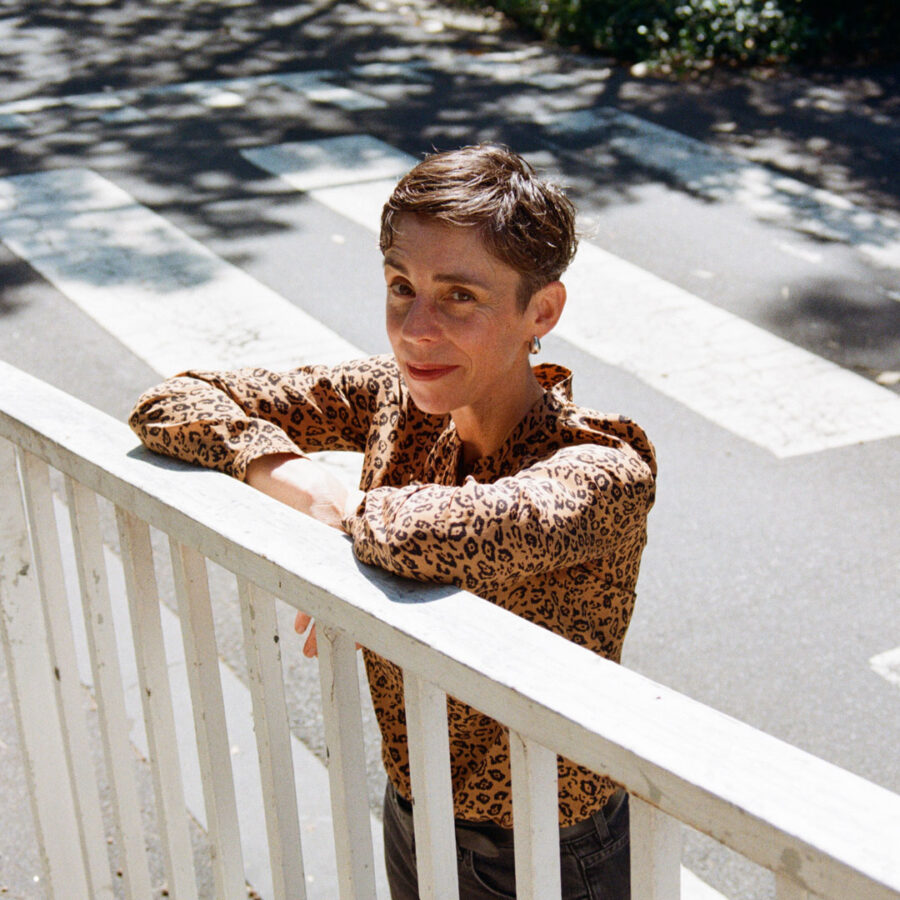
The end of the year is nigh, which means editors of cultural periodicals around the world are asking their contributors to collate lists of the best, most notable, most memorable, or otherwise significant works of the year. Lists, or listicles, in their online guise, are perennially popular, and no more so than at the end of the year. In Australia, December means summer reading recommendations, reflections on the calendar year just past, and Christmas gift suggestions. On cue, Buzzfeed, listicle purveyor par excellence, got in on the game this week with ‘19 of the Best Australian Books This Year’. There’s no books of the year tradition at the SRB so instead we offer a few seasonal observations on the list and its utility.
It is not difficult to pillory the present pre-eminence of the listicle, and especially books of the year lists. Common criticisms: lists are nothing but crude expressions of hierarchies of taste; lists are facile reductions of the complexities of culture; lists are cheap and lazy clickbait and editors should know better. The killer blow: lists conscript criticism into the service of consumerism. A books of the year list can easily be reformatted as a shopping list. In this way books of the year features risk turning respectable literary publications into little more than buyer’s guides. (This criticism is often made of literary prize longlist and shortlists, two species closely related the books of the year list.)
The listicle by nature is a form of exclusion, in that to make order of the thousands of books published in a calendar year, most of those thousands must be left out. And yet the listicle is tremendously inclusive, insofar as it invites comment and engagement. Indeed, were the SRB to make a small investment in clickbait and publish articles titled, say, ‘2015: What We Loved; What We Loathed’ or ‘Six Books To Make You Sit Up And Read More Australian Literature’ or ‘44 Rising Stars Of Australia’s Hot Hot Hot Poetry Scene’, we would expect them to be integrated seamlessly into the social media feeds of our readers. We would set aside our evenings to scroll through reader reactions to easy provocation: ‘it’s a crime Capricornia was left off this list. I expected better from the SRB’; ‘Elitist crap!’; ‘if anything, this list shows just how Melbourne-centric the poetry scene is. What about the rest of the country???’; ‘Middlebrow dross’ etc. Indeed, we would prepare to celebrate a list-borne end-of-year traffic spike.
In a widely quoted 2009 interview, Umberto Eco defended the list as the ‘origin of culture’: ‘The list doesn’t destroy culture’ he claimed, ‘it creates it. Wherever you look in cultural history, you will find lists.’ Right now, wherever you look on the internet, you will find lists. As defenders of the listicle observe, the form is not without distinguished literary precedent. If we cannot avoid a list here, let it be incomplete: the Homeric catalogue; Perec’s lists, Joyce’s lists; the catalogue poem, the blazon, the manifesto; Borges’ Celestial Emporium of Benevolent Knowledge; much of the Old Testament.
Like these precedents, lists of best books can at once be titillating and intimidating – and they can also be useful. A list of books can redress perceived critical neglect: lists of overlooked books, lists of books by Indigenous authors, lists of books on a certain theme. Readers may be reminded of books they had intended to read, and forgotten. Many books of the year lists are defiantly idiosyncratic and, by asserting personal preferences and recommendations, seek to meddle with the governing dynamics of economies of prestige. (The New York Times asked its Bookends columnists, ‘What’s the best book, new or old, you read this year?’; the Sydney Morning Herald titled its survey, ‘A Year of Reading Wonderfully’ and asked contributors to nominate books that had ‘left their mark’.) Lists of paragraph-long book recommendations can make for entertaining reading and, if one is struggling to find a gift for the aunt who has read everything or a book to take to the beach, they are fit for purpose.
So, all things being equal, why not publish a list of the best books of 2015 on the SRB? We are a digital-only publication: why not make the most of a form that is ubiquitous online? We are invested in promoting discussion of literary culture, and of Australian literature in particular, and lists undoubtedly serve this end. We have the best critics in Australia writing for us (now there’s a Top 10 that would set pulses racing) and we’d be able to report a seasonal spike in traffic to our funders.
The answer lies neither in wilful intransigence nor a noble refusal of clickbait but rather falls on our awareness of the limits of our claims to comprehensivity and the sedate pace of the SRB commissioning and editorial process, especially compared with the standard fluster of online publication. Have we yet dealt with 2015 on the SRB? Decidedly not. I haven’t come close to reading all the books published in 2015 that I plan to read and I would expect most of our contributors are similarly overburdened with unrealised intentions. The SRB will still be publishing essays on books published in 2015 well into 2016; the breaking news cycle has little effect on our schedule. We’ve published essays on some of the year’s best books – no doubt about that. We’d hope that the books that have been the subject of SRB essays together form a partial and provisional guide to books of the year: that, after all, is one objective of a literary journal. But we surely have not yet caught all the notable books of 2015 – and it may be too soon to pass a verdict on which books will finally occupy that category.
The shortlist for the 2015 Prime Minister’s Literary Award was released earlier this month and the winners will be announced on Monday. That award is given to a book published in 2014. Although the change in PM in part accounts for the lateness of the award, it may not be a bad thing that judges have had a year to mull over the best books of 2014. The critical essay is a slow form. Months usually pass between the first conversations about SRB essays, formal commissions, and publication. The long lead time gives contributors space to think, to research, and to write. It allows them to work through gutfeel and first impressions, to surpass loved it/hated it judgments and to situate a publication in its broader context. If we ask contributors to take several months to consider one or two books, can we really expect them to think over a year in books in a week or two? Shannon Burns’ SRB essay on W.G. Sebald this week is a reflection on The Rings of Saturn – and it appears twenty years after the first publication of that extraordinary book. That is an unusually long lead time – but it draws into focus the value of unhurried criticism. In twenty years, how will the must-reads and the don’t-misses of 2015 fare?
We will publish one final week of essays on the SRB and then we will take a summer snooze. What was the best essay published on the SRB this year? Browse the archive – all our content is free – and decide for yourself.
Patti Smith is the subject of this week’s first essay by James Ley. ‘Measured Out In Coffee Spoons’ examines Smith’s Collected Lyrics and her latest memoir, M Train. Is memoir the word? Perhaps not. Ley writes:
I have been referring to M Train as a ‘memoir’ by default, but it is something far more ambitious and complex than the word implies. It is a work in an elegiac mode that occupies an indeterminate space between autobiography, essay and fiction… Perhaps the most brilliant aspect of M Train is that it does not simply give itself over to memories and ruminations, but presents itself as an artfully conceived and thematically coherent work that encodes Smith’s preoccupations into its very form. Characteristically, she makes a point of naming and celebrating the authors she reads — Robert Musil, W. G. Sebald and Roberto Bolaño, among others — and no less characteristically her professions of admiration are a way for her to stake her own claim, to position her own work.
The Rings of Saturn is not, Shannon Burns warns, ‘a novel in the standard form; it is part travelogue, part memoir, part essay-meditation and part fiction.’ In ‘A Lasting Chronicle of Mourning’ Shannon Burns returns to W.G. Sebald’s The Rings of Saturn, first published in 1995:
There is a German-language book in the centre of the table. On the front cover, a man is hiking up a narrow country road. The cover is sunbleached and its pages have been warmed by the hot air. Its title, Die Ringe des Saturn, seems incongruous. An eccentric German book, I assume, in keeping with Engelhard’s eclectic tastes. I flick through the pages absentmindedly, until I arrive at the author photo. I study the image closely. Surely enough, there is my host’s moustachioed twin, staring back at me. I have no idea what to make of the resemblance.
This week we publish the penultimate instalment of Matthew J. Thompson’s extraordinary reportage from the Sulu Archipelago in the Philippines, ‘Don’t Go To Jolo’. As he tries to broker a trip to the troubled island of Jolo in the Sulu Archipelago, Matthew Thompson meets the Mufti of Basilan:
Henry, the policeman with the invisible support squad of jinns, wants to help expose me to the views of Muslims during my stay in this protected enclave. Indeed, he expresses the hope that I will embrace Islam, the way of the Sunni, and convert. Yet, he worries that because I once spent time in Iran, I might be under the sway of Shiite Islam which he considers a polytheistic cult posing as the true faith. In order that I receive the ‘correct information’ about religion and its place in the Sulu region, Henry has arranged a meeting with no less than the Mufti of Basilan, Sheikh Alim Usman Mankabong. It was meant to take place this morning but I woke in the grip of gastro, so Henry called into the hostel with medicine, bananas and water.
The final part of this series will appear on the site on Tuesday.
Having mildly impugned books of the year lists, where can we turn for our weekly selection from the SRB Archive? To Mireille Juchau’s essay on one of the most lauded books of 2013, Rachel Kushner’s The Flamethrowers, a novel that evokes the art scene of New York in the 1970s.
Kushner’s playful take on character and identity is evident in the novel’s aliases and ‘discretionary lies’, and in the larger-than-life cast. Meet artist and activist Burdmoore Model and Fah Q, group leader of the radical MotherFuckers. Meet gallerist Hellen Hellenberger, waitress Giddle, and Didi Bombonato, the deerskin-glove-wearing Italian speed racer. Not so much Dickensian, these names, as Warholian. Reno’s outsider status allows her to observe the artifice, fickleness and pretensions around her with clarity, whether enacted by artists or Italian revolutionaries.
